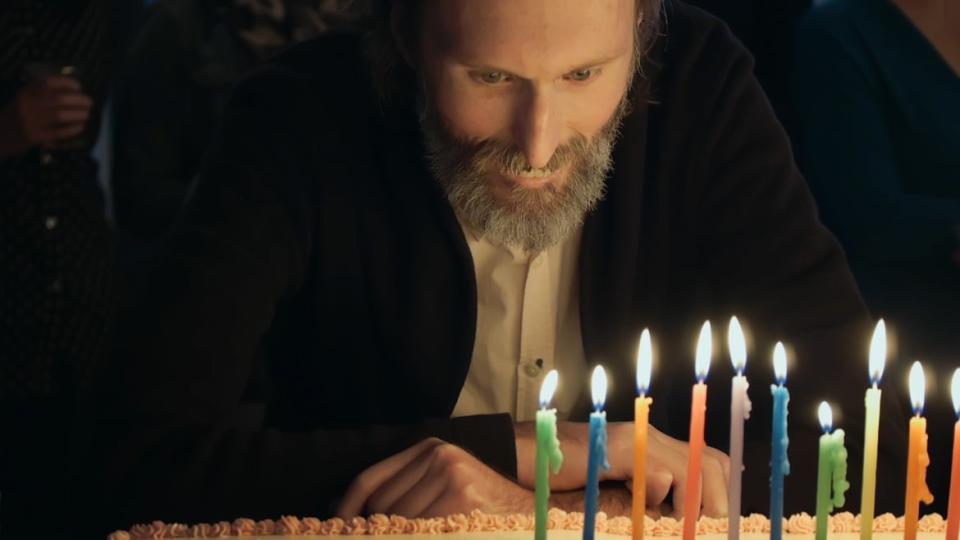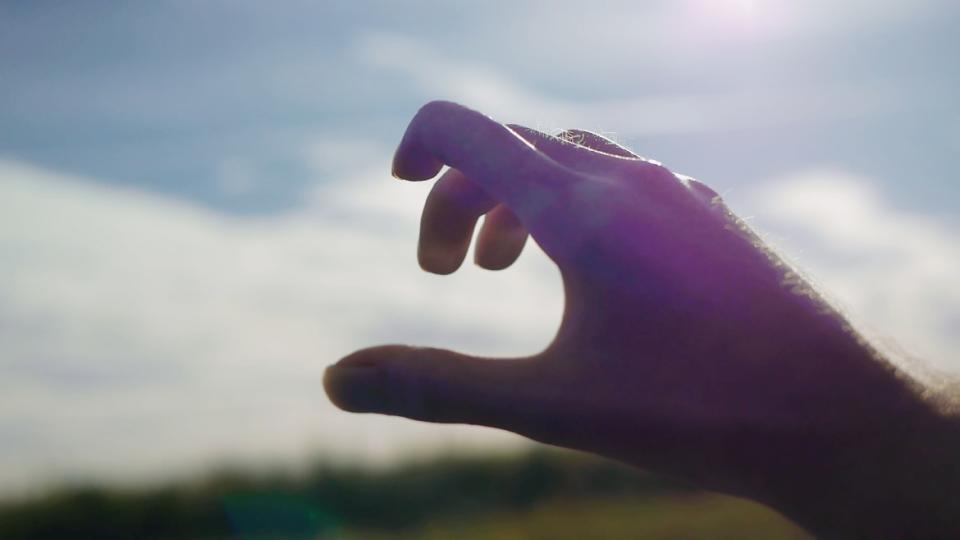The Story Behind ‘Angel Applicant,’ the Stunning Doc That Brought SXSW to Tears

Ken August Meyer doesn't like the way he looks. In 2000, not long after he graduated from art school, Meyer was diagnosed with a rare, incurable autoimmune disease called scleroderma that hardened his skin, inflamed his joints, and posed threats to his organs.
Strangers once mistook him for a mannequin because his arms resemble those of a plastic doll. At one of his lowest moments, he had to step away from his advertising job to do a year’s worth of chemotherapy treatments. It was then that he made a courageous choice: Rather than distract himself from reality, he would make a documentary about it.
(Disclosure: Allegra Frank, a Daily Beast’s Obsessed editor, is a member of the SXSW documentary jury. She was not involved in coverage of any documentaries or editing of the story.)
But not just any documentary. Meyer had long been enchanted by the work of Paul Klee, an abstract artist who fled Nazi Germany when Hitler labeled him a degenerate in the 1930s. Klee, too, suffered from scleroderma. While living in isolation in Switzerland, he made his shifting appearance the subject of many paintings. With that historical kinship in mind, Meyer came up with the idea for Angel Applicant, a stirring film that’s part art survey and part memoir. As both subject and director, he embarked on a profound quest to make sense of the turbulence he’s felt over the past 23 years.
See an exclusive clip below:
Angel Applicant premiered at SXSW Film Festival on Monday. It’s a cathartic viewing experience destined to leave many people in tears, but what’s incredible about Meyers' film is how funny it is. His narration blends wry observational humor and poetic musings to create a remarkably optimistic portrait of life’s uncertainties. You’ll feel for him, but you’ll also feel with him, whether it’s an audio recording of the rheumatologist first explaining his diagnosis or footage of his charming relationship with the young daughter for whom he’s desperate to stay alive.

Meyer didn’t always know he’d be the star of his own film. At first he thought he’d profile other scleroderma patients. But tying their emotions to Klee’s felt inauthentic, and when he showed colleagues a “test piece” he did about his own story, they encouraged him to keep going.
“I can be self-deprecating in a way that, with subjects that I would follow, I would not be able to cross that line,” Meyer told The Daily Beast's Obsessed ahead of the film’s SXSW debut. "Eventually it became more than just ailments and things like that. It was the idea that there was this perspective on living: Life is fleeting, and we can still find color and beauty in all the sadness that comes along with chronic illness.”
Has True-Crime Podcasting Become a Dangerous Hobby?
In the final years of his life, Klee (pronounced clay) became more prolific than ever. He cataloged each day of his condition with some kind of drawing, leaving behind what Meyer calls a “meticulous ledger.” Those works depict stiffening bodies and surreal deformities, a departure from the playful tableaus that established Klee’s career. He also sketched angels, hence the documentary’s title, but broke from historical tradition by making his angels more humanlike—in other words, more flawed—than the Byzantine and Renaissance painters who predated him.
With the help of Klee’s grandson and the Zentrum Paul Klee, a Swiss museum, Meyer was able to forge a deeper appreciation of the final days before his hero succumbed to scleroderma complications in 1940. One of Klee’s last pieces includes a penciled inscription that says, when translated, “You think that everything should be known? Oh no, I don’t think so.”
Meyer uses the themes of Klee’s work as chapters in Angel Applicant. During his time as an art director, he’d read a lot of treatments for advertising projects, which gave him an understanding of how to structure a story that has numerous throughlines. Creating a chronology of his own life wasn't easy, though. Meyer had to revisit photos of his younger self, back when his facial features were fuller and his fingers were mobile enough to play guitar.

Because he’s constantly in and out of the hospital—Meyer says he was hospitalized “two or three times” in the last year, as his esophagus is shrunken and food sometimes gets stuck in his throat—the documentary was made in increments. By the time he was undergoing a lung transplant in 2020, he didn’t even know if he’d live to see its completion. Now, here it is, bowing at a world-famous festival attended by some of the biggest names in Hollywood, music, and technology. The results of Meyer's vulnerability feel like Life, Animated meets All the Beauty and the Bloodshed.
“What started out as sort of a long academic appreciation and an investigation from an amateur art historian approach turned into this completely transcendental connection to what I refer to as an empathetic ghost,” Meyer says. “It was really about finding wisdom and hope, and this coupling of sadness and humor in unexpected puzzle pieces that fit together.”
Get the Daily Beast's biggest scoops and scandals delivered right to your inbox. Sign up now.
Stay informed and gain unlimited access to the Daily Beast's unmatched reporting. Subscribe now.

